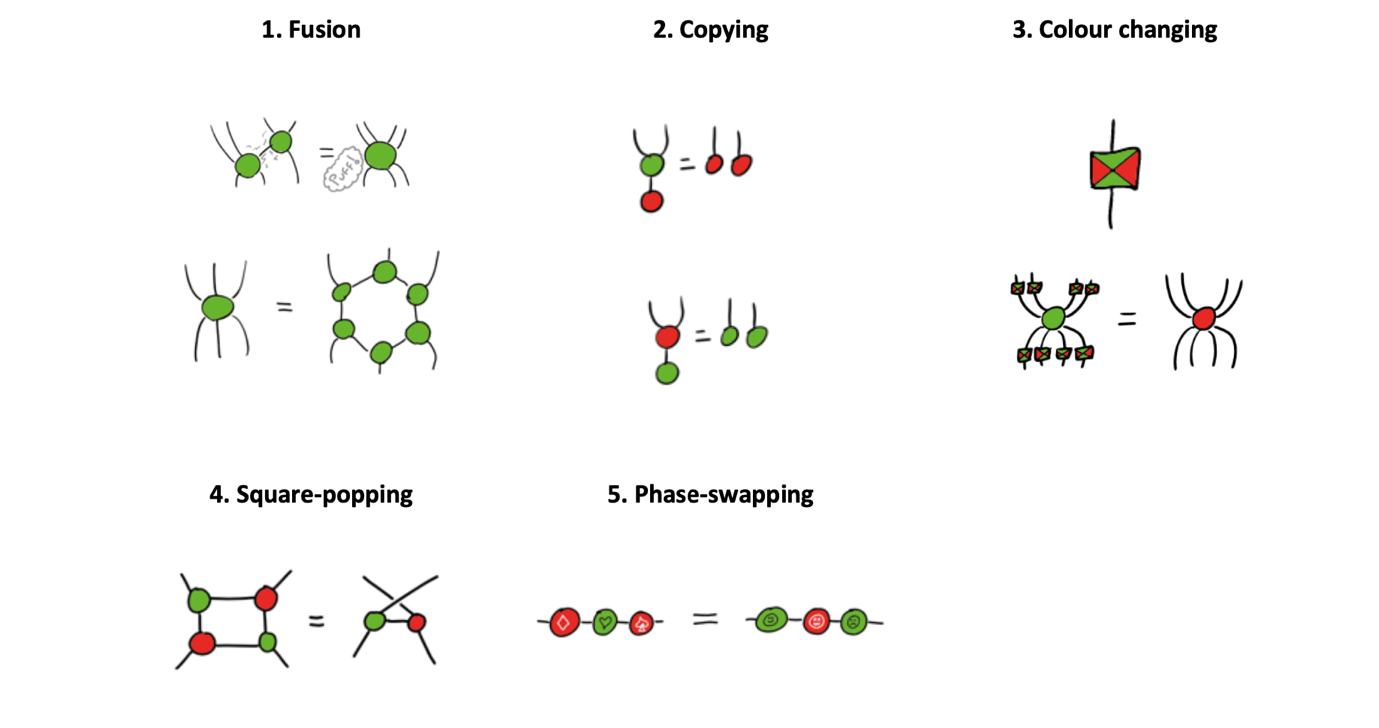Research unveils new picture-based approach to teaching physics
Posted: 20th December 2023
New research shows a maths-free framework using diagrams for total beginners could transform the way schoolchildren learn and understand quantum theory.
Quantum theory is often regarded as challenging to learn and teach, with advanced mathematical prerequisites ranging from complex numbers and probability theory to matrix multiplication, vector space algebra and symbolic manipulation within the Hilbert space formalism. It is traditionally considered an advanced undergraduate or graduate-level subject.
However, research by Department of Computer Science Professor Aleks Kissinger, lecturer Dr Stefano Gogioso, and DPhil student Lia Yeh, in collaboration with a team at Quantinuum led by Chief Scientist Bob Coecke (also a Visiting Fellow and former Professor in the Department of Computer Science), seeks to challenge the conventional view by proposing "Quantum Picturalism" as a new approach to teaching the fundamental concepts of quantum theory and computation.
The researchers establish the foundations and methodology for an ongoing educational experiment to investigate the question: 'From what age can students learn quantum theory if taught using a diagrammatic approach?'.
We anticipate that the primary benefit of leveraging such a diagrammatic approach, which is conceptually intuitive yet mathematically rigorous, will be eliminating some of the most daunting barriers to teaching and learning quantum, while enabling young learners to reason proficiently about high-level problems. Professor Aleks Kissinger'By transitioning teaching methods from symbolic presentations to pictorial ones, we believe, will increase the appeal of STEM education, attracting more diverse audience,' he said.
Quantum in Pictures
Over the summer, an educational experiment, using the diagrams and maths-free framework devised by Stefano and Bob in their book Quantum in Pictures, was used to teach the pictorial method to UK schoolchildren – who then beat the average exam scores of Oxford University’s postgraduate physics students.
The experiment involved 54 schoolchildren, aged 15-17, who were randomly selected from around 1,000 applicants, from 36 UK schools – mostly state schools. The teenagers spent two hours a week in online classes and after eight weeks were given a test using questions taken from Oxford past postgraduate quantum compuexams. More than 80% of the pupils passed and around half earned a distinction.
Quantum in Pictures was published in February 2023 and was aimed at making the fields of quantum physics and quantum computing more inclusive and open to anyone, regardless of their mathematical or scientific background.
The book is aimed at encouraging people from all backgrounds to seriously consider quantum physics or quantum computing in their professional careers, and for younger readers, to consider the study of physics, quantum theory or, as the subject grows in popularity, quantum computing.
Making quantum theory more inclusive
The book introduces quantum theory to a new audience using the “ZX-calculus”, a fully-diagrammatic formalism for describing quantum processes.
ZX-calculus, was originally introduced around 15 years ago by Bob and Ross Duncan, the head of quantum software at Quantinuum, when they were colleagues in the Oxford University Computing Laboratory (now the Computer Science Department). ZX is based on a novel system of pictures instead of formal, traditional mathematics.
ZX has, over the past few years, become a complete system for reasoning in quantum theory, particularly as it is applied in quantum computing. It is now widely used in the quantum computing industry.
Quantum in Pictures explains some of the most important results in quantum mechanics and how they are used in quantum computing. It uses 5 rules from ZX-calculus to present such principles as teleportation, entanglement and uncertainty, and essential aspects of quantum computing, such as CNOT gates and Hadamard gates. These concepts are explained in a fun, game-like way that combines mathematical rigor with inclusivity.
The 5 ZX rules used in Quantum in Pictures

The full research: Quantum Picturalism: Learning Quantum Theory in High School is available online [2312.03653] Quantum Picturalism: Learning Quantum Theory in High School (arxiv.org)
Quantum in Pictures, is available to buy on Amazon: Quantum in Pictures: A New Way to Understand the Quantum World eBook : Coecke, Bob , Gogioso, Stefano: Amazon.co.uk: Kindle Store
